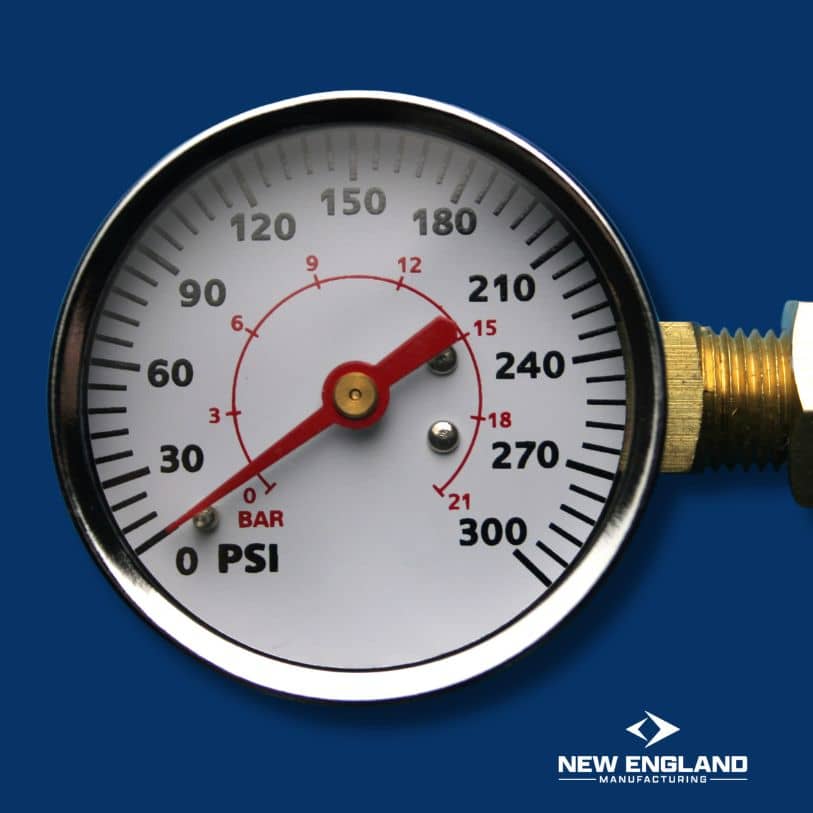Understanding Your Household Water Flow Rate and How to Maximize It
Flow Rate 101: Unraveling the Basics for Flow Test Speed
So, what exactly is a household water flow rate? The term might sound a bit technical, but it’s pretty straightforward. Simply put, flow rate is the volume of water that courses through your home’s plumbing network within a certain timeframe. It’s typically quantified in gallons per minute (GPM). You might be thinking, “Okay, but what’s the standard rate?” Good question! In a typical household, the water flow rate can span anywhere between 6 and 12 GPM. However, as the [American Water Works Association](https://www.awwa.org/) states, this range is not set in stone. The size of your house, the number of water fixtures, and the frequency and intensity of your water usage can all influence your particular flow rate. You can also visit New England Manufacturing for more details on flow test speed.
Why Does Water Flow Rate Matter?
Now, let’s get to the heart of the matter – why should you, the homeowner, care about your water flow rate? Consider the water flow test speed as the pulse of your household. If it’s too sluggish, you may find yourself grappling with water shortages at critical times (we’re talking dribbling showers when you’re already late for work or a half-filled washing machine). Not fun, right?
Consistent Water Supply: The first and foremost reason that flow rate matters is that it affects your home’s water supply. A lower flow rate can result in a lack of water during crucial times. Ever tried taking a shower with a mere trickle of water while you’re already late for work? Or what about halfway through washing the dishes when the water pressure drops, and you’re left standing with a soapy sponge? Not a delightful experience, right? A proper flow rate ensures that there’s enough water for all your needs, from your morning coffee to your evening bath.
Efficiency and Economy: On the other hand, an excessively high flow rate could mean that you’re using more water than you need, which directly impacts your wallet. Imagine leaving your wallet open with dollar bills flying out – that’s what a high flow rate can do to your monthly water bills! By optimizing your flow rate, you ensure that you’re using water efficiently, which leads to more economic water use and lower utility bills.
Avoiding Damage: Your household’s flow rate doesn’t only impact your comfort and pocket, but it can also affect the longevity of your home’s plumbing and appliances. According to the [Environmental Protection Agency](https://www.epa.gov/), consistently high water pressure, which results from a high flow rate, can wreak havoc on your pipes and appliances. It’s like forcing too much blood through your veins – it can damage the arteries. Similarly, the excessive force of water can lead to the wear and tear of your pipes and potentially damage water-dependent appliances like your washing machine, dishwasher, and water heater. This could result in significant repair costs down the line, another hit to your finances.
Environmental Responsibility: Last but not least, an optimized flow rate aligns with the universal responsibility we all share: preserving the environment. Water is a precious resource, and wasting it due to a high flow rate is not just bad for your wallet, but it’s also detrimental to the environment. By maintaining an appropriate flow rate, you’re doing your bit for water conservation.
As you can see, your household’s water flow rate plays a crucial role in your life. It’s not just about getting enough water for your daily shower. It’s about ensuring comfort, saving money, preventing potential damage, and contributing to environmental conservation. So, the next time you turn on a tap, remember that the flow of water is more significant than you think.
Measuring Your Household Water Flow Rate – Flow Test Speed
Here’s a simple DIY method:
- Step One: Shutdown: Ensure that no water is running anywhere in your home. That means turning off taps, washing machines, dishwashers, sprinklers, and any other water-consuming device.
- Step Two: Time Trial: Fill up a container of a known volume – say, a gallon jug – with tap water. Keep a keen eye on the clock to time exactly how long it takes to fill the container.
- Step Three: Calculation Station: It’s time to do some math (don’t worry, it’s pretty simple). Divide the volume of your container by the time it took to fill (in minutes), and you’ve got your flow rate.
For example, if it takes 15 seconds to fill up a 1-gallon jug, your flow rate is 4 GPM (1 gallon divided by 0.25 minutes). Keep in mind that this method provides an approximate measure, and the flow rates can differ between various fixtures and appliances in your home.
The Golden Rule: Determining if Your Flow Rate is Just Right for Flow Test Speed
So, you’ve cracked the code and deciphered your household’s water flow rate. But how can you tell if it’s just right? This is where understanding what constitutes a ‘normal’ or ‘optimal’ water flow rate comes into play.
The Lower Limit – When Less is Not More: If your home’s flow rate is below the lower limit of 6 GPM, chances are you’re dealing with inadequate water pressure. This situation can make ordinary tasks around your home frustrating and time-consuming.
- Do you feel like you’re waiting forever for your bathtub to fill up?
- Or maybe your dishwasher doesn’t seem to be cleaning your dishes as effectively as it used to.
- Perhaps you’ve noticed your washing machine taking ages to complete a cycle.
- Or the streams from your sprinkler system are barely reaching your garden.
These are all tell-tale signs of a flow rate that’s on the lower side and know more about flow test speed.
In such cases, it’s worth bringing in a professional plumber to assess your system. They can identify the underlying cause – whether it’s an issue with your pressure regulator, blockages in your pipes, or even municipal supply issues.
The Upper Limit – When More is Less: On the other hand, a flow rate exceeding the upper limit of 12 GPM could suggest you’re using – and paying for – more water than necessary. This could manifest in different ways around your home.
- For instance, you might notice an excessive splash when you open your faucets.
- Or a powerful surge of water in the shower that seems to empty your water heater too quickly.
- Your toilets might refill unusually fast.
- Or your garden hose could be hard to control due to the water’s force.
Moreover, a high flow rate can be a silent destroyer, steadily damaging your home’s plumbing infrastructure without showing any immediate signs. The relentless pressure could strain your pipes and wear out your appliances over time, leading to leaks, bursts, or mechanical failures. This could eventually result in expensive repair or replacement costs.
Striking a Balance – The Sweet Spot: Ideally, your water flow test speed should be within the range of 6 to 12 GPM, providing a balance between efficiency and functionality. This range ensures that you have enough water pressure for your daily needs, without straining your plumbing system or wasting water.
In summary, measuring your water flow rate isn’t just a one-off task. It’s a parameter that should be checked periodically to maintain the efficiency and longevity of your home’s plumbing system.
Improving Your Household Water Flow Rate for Flow Test Speed
Don’t worry if your water flow rate isn’t quite hitting the sweet spot yet. There’s always room for improvement, and we’ve got some handy strategies for you:
- Pipe Patrol: One possible culprit for a reduced flow rate is blockages in your pipes. Mineral deposits or debris can sneakily accumulate over time, restricting the flow of water. Regular cleaning or a professional descaling service can help restore your pipes to their former glory.
- Regulator Revamp: If your water pressure is unusually low, a faulty pressure regulator might be the root cause. This critical component of your plumbing system might need adjusting or, in some cases, complete replacement.
- Pipe Upgrade: If your home is on the older side and has narrower pipes, an upgrade might be the key to increasing your water flow rate. Larger pipes can handle a higher volume of water, effectively boosting your flow test speed.
As a newfound water flow rate enthusiast, always remember that an efficient system isn’t just about convenience – it also saves you time, money, and prevents unnecessary wear and tear on your plumbing network.
Conclusion:
In summary, understanding your water flow rate isn’t merely plumbing jargon; it has tangible real-world implications for your comfort, convenience, and budget. So, the next time you turn on your faucet, bear in mind that there’s a world of science and precision behind that rush of water. Maintain a keen eye on your water flow test speed to keep your home running smoothly, and you’ll certainly be going with the flow.
References:
- American Water Works Association (n.d.). [Water Use Statistics](https://www.awwa.org/).
- U.S Environmental Protection Agency (n.d.). [Water Sense](https://www.epa.gov/watersense).

Mark R.
With a strong foundation in industrial safety and fire protection systems, Mark R. specializes in creating clear, technical, and compliance-driven content. Writing for SafeTech Reports, he covers topics such as fire hydrant testing, PPE protocols, emergency procedures, and smart technology integration in safety systems. His work ensures that professionals stay informed on the latest regulations, best practices, and emerging trends in safety and infrastructure maintenance.
Get in touch
We usually respond within 24 hours
Need Reliable Water Flow Test Equipment?
For over 70 years, New England Manufacturing has been the trusted source for fire hydrant and water flow testing kits. From pitot gauge kits to custom test kits, we provide precision, durability, and expert calibration to meet your needs.
- Custom-built test kits
- High-quality pressure gauges
- Reliable calibration services


